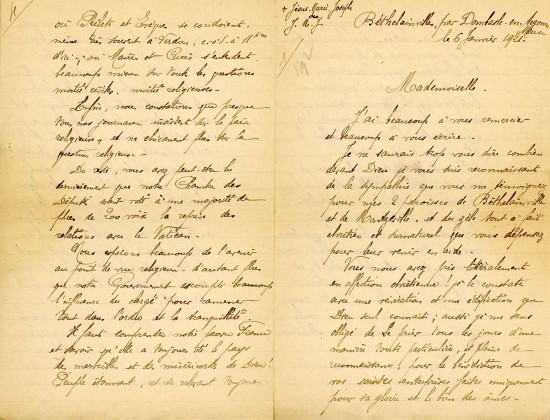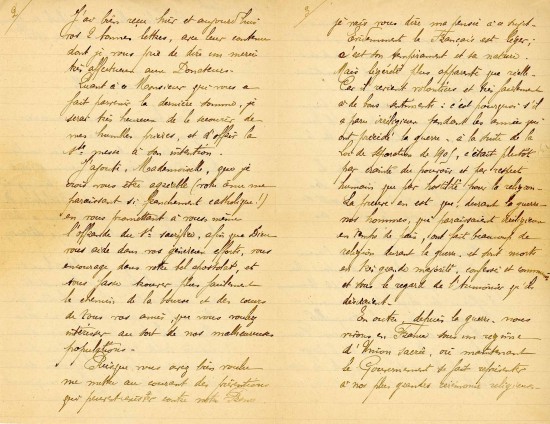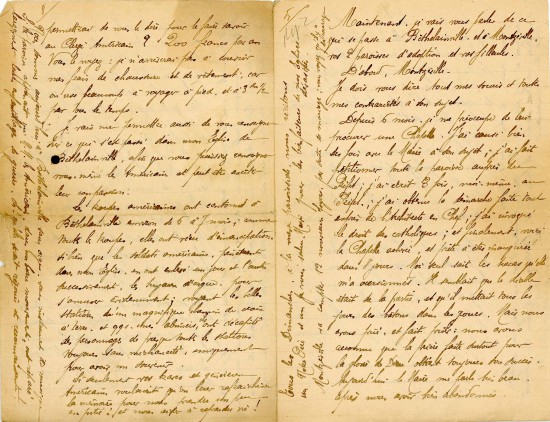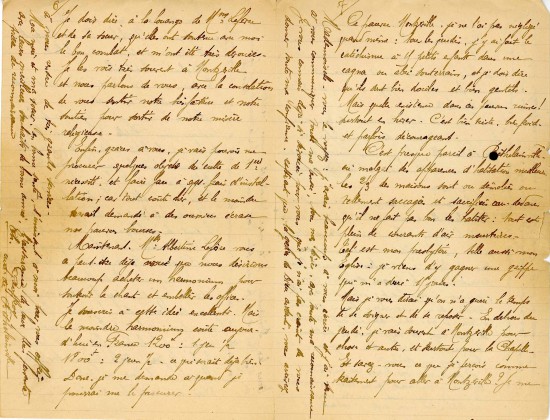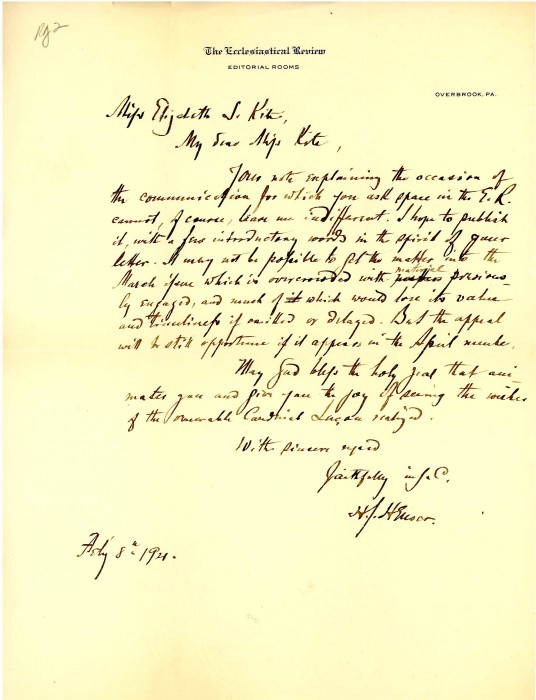As I was processing the correspondence series of the Elizabeth Sarah Kite papers (MC2), I came across a group of letters written to Kite and signed by “Geoffroy”, which are all in French. As I am not able to read French, nor did I have the time or inclination to transcribe the handwritten letters into Google Translate, I was pleased to find a grouping of records which included some letters from Geoffroy (who turns out to be Theophile (or Theophilus) Geoffroy, a priest in Bethelainville, France) along with letters from Herman Joseph Heuser, editor of The American Ecclesiastical Review, referencing the letters from Geoffroy.
It seems that Kite had sent some of Geoffroy’s letters, along with a short article written by her, to The American Ecclesiastical Review, hoping to have them published in order to raise awareness and solicit support for the plight of French Catholic seminaries after World War I. French Catholic clergy were sent to fight in the war, as were other French citizens, and so the Catholic Church in France experienced a serious dearth of clergy after the end of the war. As a scholar of American history and in particular, of French-American relations during the Revolutionary War, Kite knew the extent to which the French assisted the Americans during their fight for independence. Heuser’s initial response was that the piece was out of scope for the magazine, and that they were not able to respond to and publish every such appeal that they receive: “…if we were to print the truly moving cries of priests and religious here and there in Belgium, France, Central countries, Ireland, and the far East, it would cause odious distinctions and open the gate to a thousand furhter [sic] demands that we are unable to answer.”
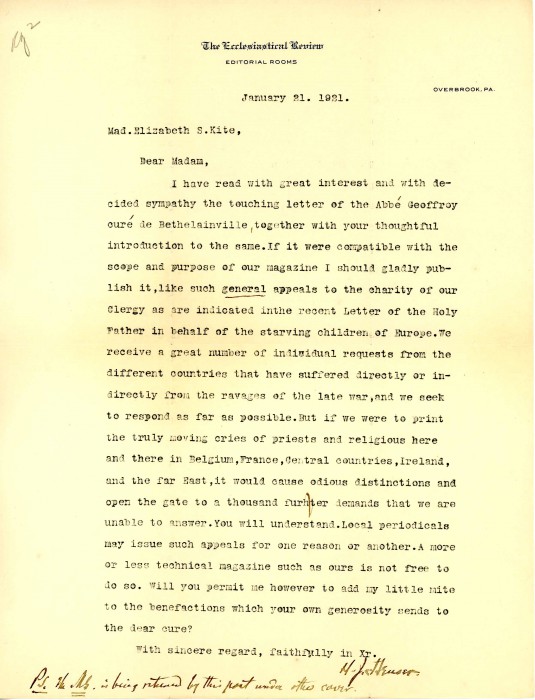
Letter from Heuser. Postscript reads: "P.S. the MS is being returned by this post under other cover."
However, a subsequent letter reveals that Kite’s appeal struck an emotional chord in Heuser:
"Miss Elizabeth S. Kite.
My dear Miss Kite,
Your note explaining the occasion of the communication for which you ask space in the E.R. cannot, of course, leave me indifferent. I hope to publish it, with a few introductory words in the spirit of your letter. It may not be possible to get the matter into the March issue which is overcrowded with material previously engaged, and much of which would lose its value and timeliness if omitted or delayed. But the appeal will be still opportune if it appears in the April number.
May God bless the holy zeal that animates you and give you the joy of seeing the wishes of the venerable Cardinal Luçon relayed.
With sincere regard,
Faithfully in J.C.,
H. J. Heuser
[?] 8th 1921."
In 1921, Kite’s article was published in The American Ecclesiastical Review (see our online catalog for our collection of The American Ecclesiastical Review here) and entreated Americans of any faith to come to the aid of France:
Yet may we not hope that the generous spirit of the American clergy and people who are…so largely indebted to the priesthood of France, and that under many more titles than that of their readiness to help us to independence and with it to religious freedom—may we not come to the aid of the French Bishops in this matter of the seminaries, and to revive the flagging hopes of the venerable Cardinal of Reims?
I could not help but notice that Theophile Geoffroy was not mentioned in the piece published in The American Ecclesiastical Review. My conclusion is that the publication may have felt that featuring a more well-known or prominent figure would have a more significant impact. Based on the piece that Kite wrote, she had been in contact with the Cardinal of Reims as well (though I did not see evidence of this correspondence in the collection). The Cardinal of Reims at the time was Louis-Henri-Joseph Luçon, whose church in Reims became a symbol of the victims of German aggression during the war. The German army began dropping bombs on Reims in September 1914 and did not cease until June 1918. Cardinal Luçon remained in Reims with his parishioners even as the bombs destroyed the cathedral and the town. He was the last to leave Reims and the first to return to rebuild after the armistice. Due to a French law, Luçon could not expect to receive monetary assistance from the government to rebuild his church. As such, he appealed to the Dean of the American Hierarchy for help. John D. Rockefeller was among those who gave money for the restoration of the cathedral, which was eventually finished in 1938. Incidentally, Reims is where the Germans officially surrendered to President Eisenhower in 1945, one day before VE-Day.
Reference
Kite, Elizabeth Sarah. “A Plea for the Seminaries of France.” The American Ecclesiastical Review 64 (1921): 407-411. Print.


